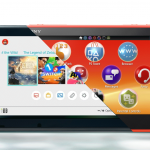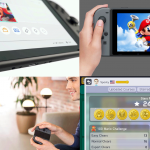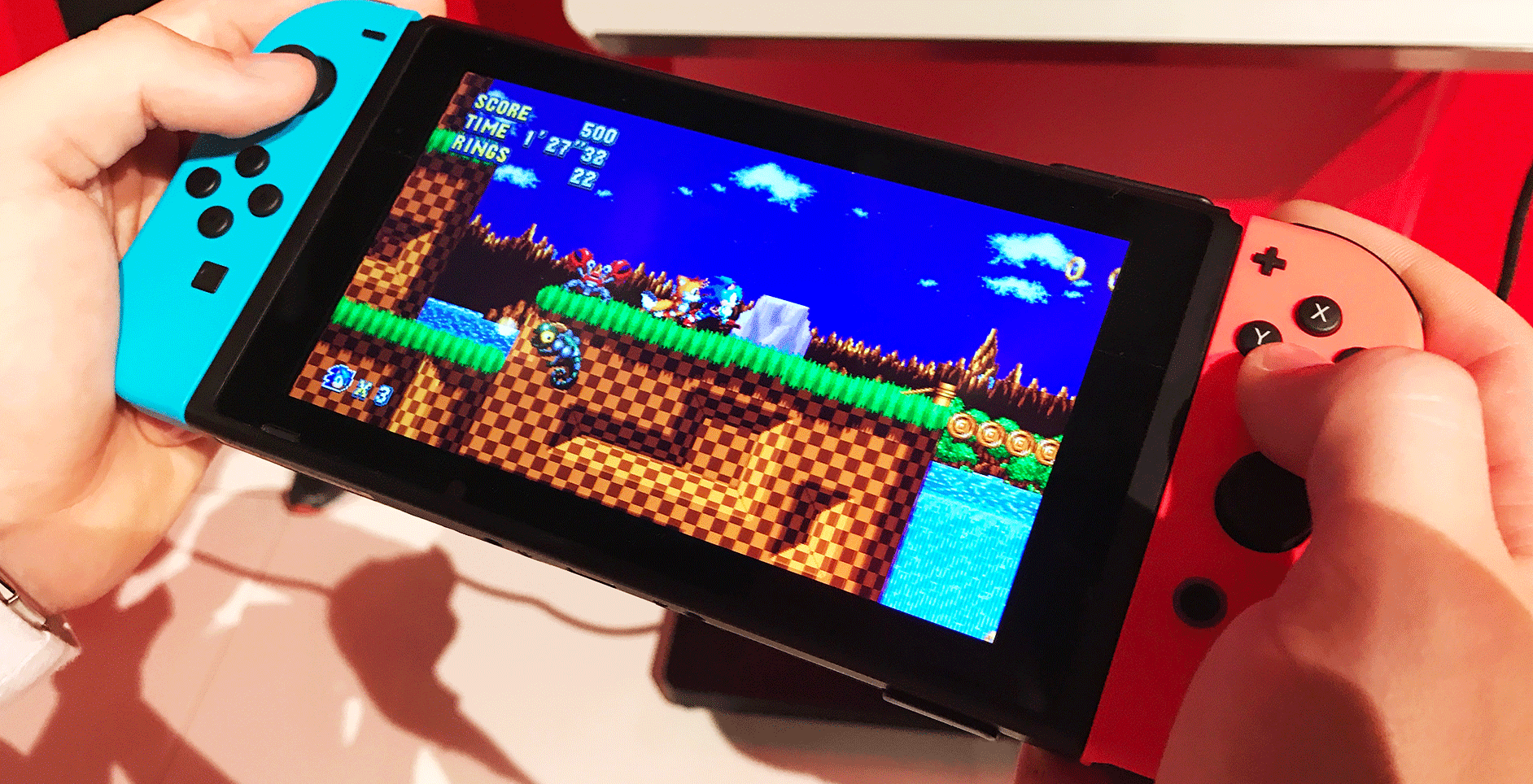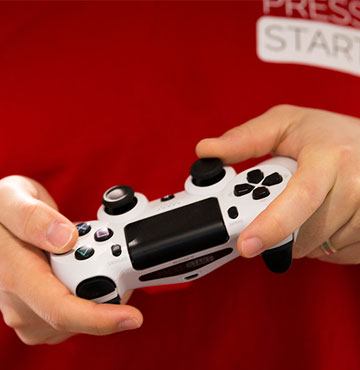After releasing the price on of the Nintendo Switch Friday night, I saw a wave of backlash that was mainly aimed at the console being more expensive than many were hoping for, so I went into this event with the objective of deciding whether $469 was justified in the quality and concept of the Nintendo Switch hardware.
Honestly, after spending three hours with the console, the range of control methods, viewing styles, and a bunch of launch titles, I can say with confidence that it’s worth the price of admission.
THE HARDWARE
I was excited about the Switch hardware as soon as we were hearing pretty substantial rumours that it was going to be a proper hybrid portable/home console. Once the October trailer was revealed and it was confirmed that we’d be getting console quality levels of gameplay to take on the go, I was extremely hyped for what seemed to be the first genuine advancement in the home console space in some time.
Upon getting my hands on the Switch Tablet, I was surprised with just how small and sleek it looked. Boasting an almost identically sized screen as the Wii U Gamepad, The Nintendo Switch is impressively thin. Initially holding the device, it felt a little bit heavier, but in a good way. Looking back, the Wii U Gamepad is made of a cheap plastic-like material which is light, but doesn’t scream quality. The Nintendo Switch is the complete opposite.

Upon walking up to the Nintendo Switch to play Mario Kart 8 Deluxe, I was pleasantly surprised with how just how great the screen looks. It’s incredibly sharp and vibrant and definitely does not have the same reflective issues that the Wii U screen had. The screen is a 720p, multi-touch display. It has a capacitive touch-screen which means that you don’t get that horrible screen texture and no longer need a stylus. No current games make use of the touchscreen and Nintendo hasn’t really detailed what it will be used for.
The Switch dock oozes quality. I was expecting it to be much more flimsy, especially when pulling out the Switch tablet or putting it back in, but it firmly stayed in its position. When you think about it, the dock doesn’t really do anything besides pushing the content to your TV and charging your Nintendo Switch. It’s an incredibly simple part of the Switch experience and that’s the way it should be.

Pulling the Nintendo Switch out of the dock will instantly transfer gameplay to the Switch screen. It’s a really smooth process and similarly, if you’re playing the the Pro controller and pull out the Switch tablet, it’ll instantly recognise that you’re playing on that device and move controls to there. Similarly, when you put the Switch back in the dock, it’ll instantly recognise that you want to use your Pro controller.
Nintendo has detailed three different play styles so far. TV Mode which is essentially the Switch tablet docked with you playing on the TV whilst using the Joy-Cons, Joy-Con Grip or Pro Controller. Tabletop mode which makes use of the Nintendo Switch kickstand to use the Joy-Con grip or Pro Controller. Lastly, handheld mode which will have your Joy-Cons attached to the sides of the Switch like a more traditional handheld.
All felt like completely normal ways to use the Switch. In all honestly, split screen on Mario Kart 8 Deluxe felt a little bit chaotic at times, but less chaotic games like Snipperclips felt more than fine.
THE CONTROLLERS
Nintendo, for the past few generations has been known for providing many different ways to play. That’s something that I was worried about with the Switch. They’ve gone all out with a number of control methods but thankfully, all were clearly built for a specific purpose and all work really seamlessly with the Switch both in the dock and out of the dock.
Playing the Nintendo Switch in handheld mode with the Joy-Cons attached feels great. The buttons are a little bit more squished together (like the 3DS), but everything felt comfortable. It’s also worth noting that L3 and R3 are present by clicking the analogue buttons.

Next up, we played Mario Kart with individual Joy-Cons. People who have played Mario Kart with Wiimotes will know how this works, except there’s one key difference with the Joy-Cons. Thankfully, the Joy-Cons obviously have analogue sticks which makes a world of difference.
The Joy-Cons are also fitted with HD rumble which will really make you feel every twist and turn in Mario Kart. Honestly, I was more than happy playing Mario Kart 8 Deluxe with the individual Joy-Con. Steering was great with the analogue stick and Nintendo has been clever enough to put an L and R button on the sides of the Joy-Cons for when you’re holding the Joy-Cons horizontally. Now, you’re probably not going to want to play games like Zelda with the Joy-Con, but for games like Mario Kart, where it’s in quite sort bursts, it’s absolutely perfect. Nintendo has been incredibly clever in ensuring that you can literally buy a Nintendo Switch, have two Joy-Cons at your deposal and be ready for split-screen encounters.

Moving onto the Joy-Con Grip. As the name suggests, the one included in the box is literally a traditional controller grip which allows you to slide a Joy-Con in each side. There is also a Joy-Con Charging Grip which will allow you to charge the Joy-Cons by USB-C whilst plugged in, but you’ll need to spend an extra $40+ to get this. The Joy-Con Grip is way more comfortable that it has the right to be. What initially looked like an awkward controller, feels great in the hands. It’s also worth noting that you can use the Joy-Cons individually in each hand if you feel to go for a more comfortable, split approach.

The Pro Controller felt great in the hands and felt more sturdy than the Joy-Cons, but at $99.95, I’d have a hard time recommending it. The Joy-Cons in the Grip felt good enough to the point that I don’t think I’d personally need to pick one up at launch. The good thing is that the Pro Controllers do have gyroscopes built in for games like Splatoon 2, so that functionality is there, but there’s something special about using the Joy-Cons to the point that it’s almost addictive. They really do feel like they’re suited for any situation.
Above all, I’m just glad that Nintendo is dropping the WiiMotes and Nunchuks. Those controllers have had their day and the Joy-Con feels like a solid combination of the two of them.
THE GAMES
We’re detailing quite a lot of the launch window games in seperate articles, but I thought that it was important to touch on them as a whole in the importance of making your purchase decision. Yes, the launch lineup for the Nintendo Switch is quite weak, but so are most launch lineups. It’s not as bad as it was for the Wii U and 3DS.
Zelda: Breath of the Wild genuinely looks like it could be one of Nintendo’s best games of all time. Sure, you can play it on the Wii U, but I’m fairly sure it won’t be the optimal experience. Zelda: BOTW genuinely feels like Nintendo’s first mature open-world game and one that you’d actually want to play on the go.

1-2-Switch is a little bit of a let-down, but I’ll say that it’s essential in showing off the potential and advancements of the Joy-Con. Arms feels like a innovative game and includes characters that I actually think I could care about. A lot of people are comparing it to Wii Sports Boxing but it’s far beyond that. Snipper Clips is one of the games that felt great as a tabletop game. Whilst playing in co-op, my partner and I were cackling uncontrollably whilst trying to solve puzzle, after puzzle.
Mario Kart 8 Deluxe and Splatoon 2 are exactly what you’d expect from Nintendo. They’re both minor improvements on their Wii U iterations and seem like they’d be a blast to play on the go.

Yes, the current lineup of Switch games feels a little underwhelming, but I’m more confident in this lineup and what’s to come that I have been in previous Nintendo generations.
THE PRICE
I want to talk a little bit about the $469 price point. Yes, it’s high compared to the PS4 and Xbox One in their current state. But, the Xbox One and PS4 launched at $599 and $549 respectively. Whilst the Switch has less raw power than both of these consoles, the Switch isn’t really even comparable for a variety of reasons.
Whilst Nintendo is marketing it as a home console, it’s very much a portable gaming device. Yes, it a completely competent home console but you can take the Switch literally anywhere and play it without losing any quality in visuals or control.
In particular, the Australian price might seem a little steep but it’s actually about correct once you convert from the US dollar and add tax/shipping/import costs.
The Nintendo Switch is out on March 3rd for $469 alongside Zelda: Breath of the Wild, 1-2- Switch, Just Dance 17, Skylanders Imaginators and Super Bomberman. In the box, you’ll get the Switch tablet, two Joy-Cons, a Joy-Con grip, two wrist straps, a HDMI cable and a power cable.



